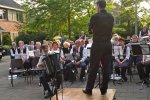jozz pid=70447 dateline=1584262499 said:
Sounds like you are boosting the signal at a location that you shouldnt boost.
Can you describe the complete chain you are running, so from the mics to the desk to the IEM and to the PA, and what devices there are in between.
If you thought about running compression on the INPUT/send part of your chain, stop right there. This will induce feedback beyond your wildest dreams.
Keep it simple, only send a dry signal to the desk. Set your input gain properly and take it from there.
jozz- Ok, a lot of variables. I have tried to use every combination of boost I can think of. As I experiment further I am having further realizations.
One problem I am having is that it is just me, and so far in the confines of my room adjustments are made being within arms length of my monitor (this is a battery powered Traynor TVM50 - which has two inputs 1 being XLR or 1/4 which has a volume adjustment and a single tone knob, and the other input being a 1/4 input with Gain, Volume, Bass, Mid, Treb and Hi/Low input pushbutton selector). There is also RCA inputs but I dont use those. It is really hard to operate like that without feedback.
For simplicity sake I will run a Stereo 1/4 cable from the accordion into a splitter Left and Right Mono 1/4 jacks which then feed into the two inputs of the amp. I use the 2nd input for the treble of the accordion as it has the most eq adjustments as well as gain - so more control over the sound that matters.
What has worked best is to crank the volume on this channel while leaving the gain at about 2/10. Bass 1...Mid 2...Treble 7. On the accordion the knob is at about 75%. Anymore gain on the amp it tends to distort. I actually need another amp, this one isnt loud enough, but it is what it is.
For the bass side the accordion knob is cranked. The volume on the amp is at 5 and the tone 1 (these numbers are all out of 10). The tone isnt as good because of significant db loss between notes (almost 10db between the most quiet and loud noted due to mic location). Any louder on the amp and the feedback happens. I need to relocate these mics centrally instead of at the bottom end of the soundboard - the difference is quite noticeable.
I played a gig last night (looks like the last one for awhile) and just used the amp - no PA. Projected out into the crowd. Had to really up the pressure on the bellows to cut through...I was bending notes. But I didnt actually feedback unless I got too close to the amp. Hooray! BUT - had a heck of a time with the In ear monitors due to the Bass guitar and Drums being picked up by the accordion mics and going in my ears. Unfortunately there is no way anyone in the audience was going to know any better what was what coming from my amp with mains right beside it (small venue) so I couldnt ask anyone for sound feedback...although I was told I could be heard, but not probably loud enough.
There is one other item in my signal chain, only on the treble side. Between the accordion and amp I have installed an ABY (its all I have) which splits things into two channels - one going to the amp and the other going into my DI box so I can crank the gain and send it into my IEM (so they can be heard). I do try to keep my signal chain simple going to the amp, and in this case it really is - I got rid of the Para DI from the chain (except to use as a boost for my IEM) because it wasnt helping any. Also in this instance I went wireless so had no bass in the amp, only treble.
So back to my room, generally I am making adjustments at arms length and it is feeding back. The same happens in rehearsal space. I need another set of hands. After playing last night I have realized I cannot have the amp anywhere but well in front of me projecting away from me. It cannot be beside me or behind me, even with minimal gain on the accordion knobs or it goes bezerk...which means I cant use it as a monitor. Also in every instance where there has been floor monitors I cant have any accordion in there or my band hates me.
[font=Tahoma,Verdana,Arial,Sans-Serif]Thanks for the input on compression...I am definitely a believer of less is more in the chain.[/font]
Also stopped by the music store today before everything shuts down...looked at a lot of DI boxes and such...it seems the best thing to get IS going to be a small mixer after all. At least based upon price point for now.
I also couldnt help but to put a down payment on a Roland FR3-S on sale. With any luck Armageddon wont happen and I will own it by years end or sooner. Very excited about that.
debra - We are always using whatever monitors the venue has....which was none last night so we had no feedback issues. But when we do the accordion is always causing grief. I will have to remember to bring carpet or something next time but again this kind of feedback is all or nothing - it happens without even playing a note so there is no note to isolate (which is why I had bought the Para DI as it does have some capability that way and I was able to utilize it somewhat with the sm58 I had installed).
Sorry, long post.
. None of the bass mics and only the two middle treble mics.

